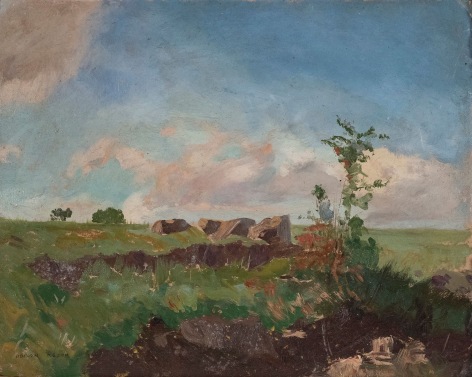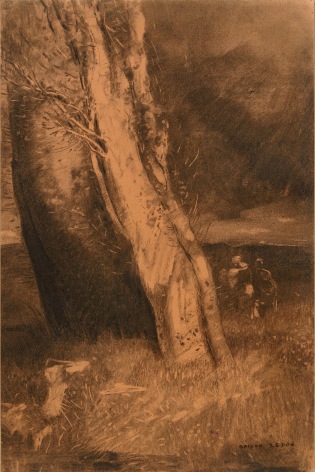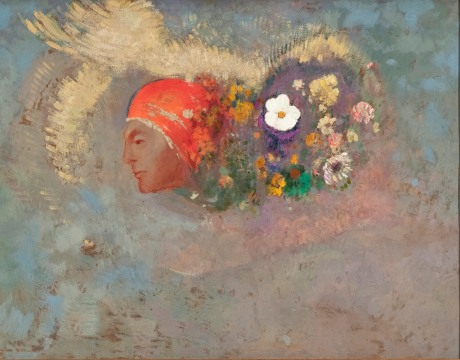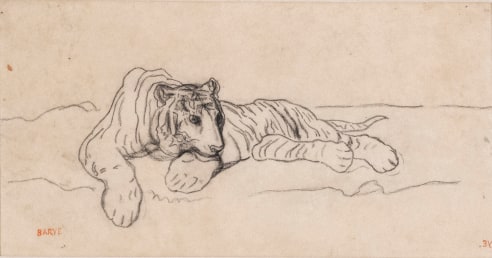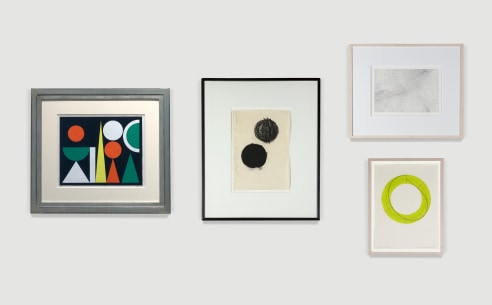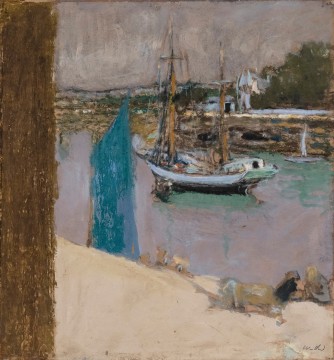
The work of Odilon Redon (1840-1916) depicts a world entirely of his own making, where dreams meet reality and fear meets beauty. Fusing elements of Symbolism and Romanticism, Redon’s style has proven enduringly unique and influential. Born on April 20, 1840 to a wealthy Bordeaux family, Redon suffered from illness and epilepsy throughout his childhood. Due to his poor health, he spent a large amount of time separated from his family and living alone at the country estate, surrounded by the dramatic arid landscape, and escaping into the literary worlds of Romantic poets such as Edgar Allen Poe, Gustave Flaubert, Baudelaire and Mallarmé. The macabre and fantastical themes found in these writings were incredibly influential on his burgeoning artistic development. Redon began to take drawing classes from artist Stanislas Gorin, who taught by having him copy works by Eugène Delacroix and other French Romantics. But after failing out of the Beaux Arts architecture program, Redon devoted himself to drawing, studying briefly with J. L. Gérôme in Paris in 1863, then learning lithography as an apprentice to Rodolphe Bresdin in Bordeaux. This connection was important as Redon developed a style in which he combined engraving and charcoal toproduce works with depth, texture, and a strong contrast between shadows and highlights. This technique paved the way for his important series of “Noirs,” black and white heavily worked charcoal drawings depicting scenes of somber beauty or nightmarish imagery, and it is these works which define the first part of Redon’s career. Exhibited in 1882, they were celebrated by critics and artists, and in 1884, a cult novel by Joris Karl Huysmans titled À rebours (Against Nature) told the story of a decadent aristocrat who collected Redon drawings. But the public still remained skeptical. Though lithographs could be easily converted into prints and then widely distributed, Redon struggled commercially and did not make a consistent living from his work until much later.
In 1880 Redon married Camille Falte. Their first son Jean died in 1887 and in 1889 their second son Ari was born. Along with his growing popularity in the art world, this personal happiness helped alleviate the depression Redon had struggled with throughout his life. There is a clear shift in his work at this time with the introduction of color, and by 1902, Redon had stopped creating Noirs altogether. These new colorful, poetic studies in pastel and oil depicting flowers, butterflies, and dreaming heads, experienced much more commercial success and were more in line with the popular trends of the era which now included Impressionism.
Redon’s popularity increased again with the publication of a catalogue of etchings and lithographs by André Mellerio in 1913. That same year, he was given the largest single representation at the New York Armory Show.
Odilon Redon died in 1916. The deeply influential and profound nature of his work was reflected in the exceptional attendance at his funeral. His oeuvre is thematically cohesive and recognizable, in spite of varying styles and subject matter. Dreams meet nightmares, merging on paper or canvas to bring viewers to a place both fantastical and psychological. Redon is now considered one of the greatest image makers of the 19th century; his work is both synonymous with Symbolism and regarded as a precursor of the Surrealist movement.

